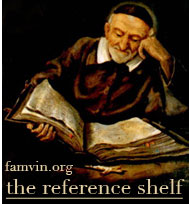History of the Congregation after the French Revolution

The French Revolution and the Congregation of the Mission
The Government of the Congregation after the French Revolution
The Restoration Superiors General
Jean-Baptiste-Rigobert Nozo (1835-1842)
Background of the Vincentian History Project
THE VINCENTIAN HISTORY PROJECT
1. In 1992, the first volume of a projected five volume series on the history of the Congregation of the Mission was published simultaneously in Spanish and Italian. The authors were José María Román Fuentes, C.M., and Luigi Mezzadri, C.M. It covers generally the history of the Congregation in the seventeenth century.
In 2000, there appeared Volume II/1 in Italian, written by Luigi Mezzadri and his collaborator Francesca Onnis. It generally covers the eighteenth century, up to the French Revolution. To complete Volume II, [with II/2] there is still needed an account of the extensive history of the Congregation in Poland as well as the beginnings of the Congregation in Spain and Portugal. Historians are developing these sections.
2. At the death of Father Román, the project was suspended. Father John Rybolt was appointed to continue to work with Luigi Mezzadri. This began in 2004, resulting first in an outline of the entire work, divided into four volumes: Vol. III: From the French Revolution to 1843; Vol. IV: 1843-1878; Vol. V: 1878-1915; Vol. VI: 1915-1984. We conclude at 1984 as the year of the approval of the new Constitutions.
3. Each volume will have two major sections: (1) the general government of the Congregation: superiors general, assemblies, legislation, relationship with the Holy See, etc.; (2) the provinces of the Congregation, including the major figures of Congregation (saints, blesseds, and other confreres of importance for their sanctity, achievements and reputation, whether good or bad.) Each century will also have a special chapter dedicated to a general analysis and evaluation of the Congregation: its style of government, exercise of authority, influence, theology, formation, spirituality, recruitment, finances, lifestyle, and the like.
4. We begin now to post the sections of the work on the FamVin site to invite comments and suggestions from the Congregation. Our conviction is that if this project is to be a history of the Congregation, then the Congregation should be invited to participate in it. Readers will be asked to make any comments and suggestions they wish, either on the form of the material or on its content. Certain questions should be kept in mind: Is it interesting? Is it understandable? Is it sufficiently complete? What is missing? What questions do you want to ask about the material?
5. Materials from each province will also be added. These are divided according to the time periods of each volume.
6. We are grateful to Father John Freund, C.M., for his willingness to support this process of evaluation and suggestion.
John Rybolt, C.M.
return to History of the Congregation after the French Revolution
